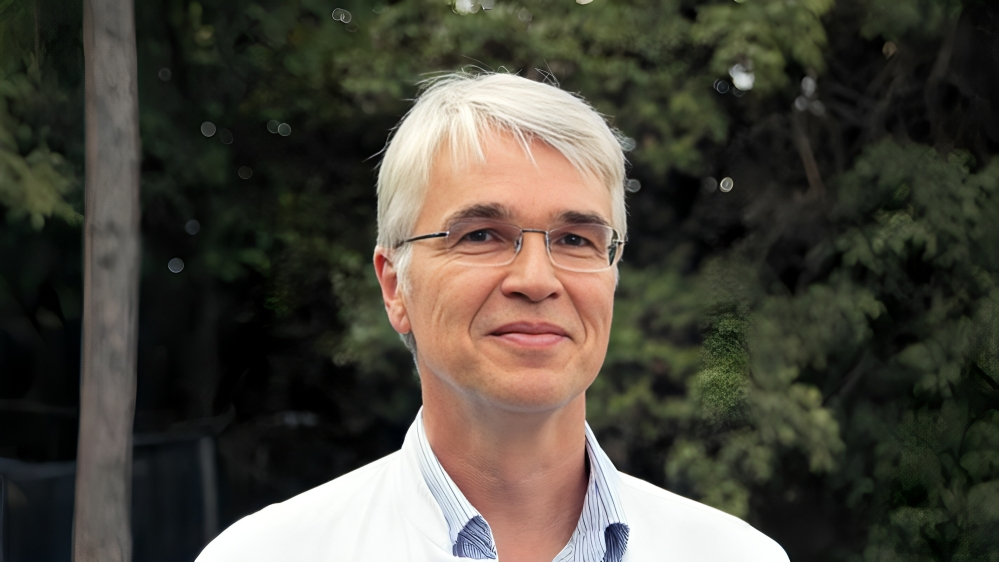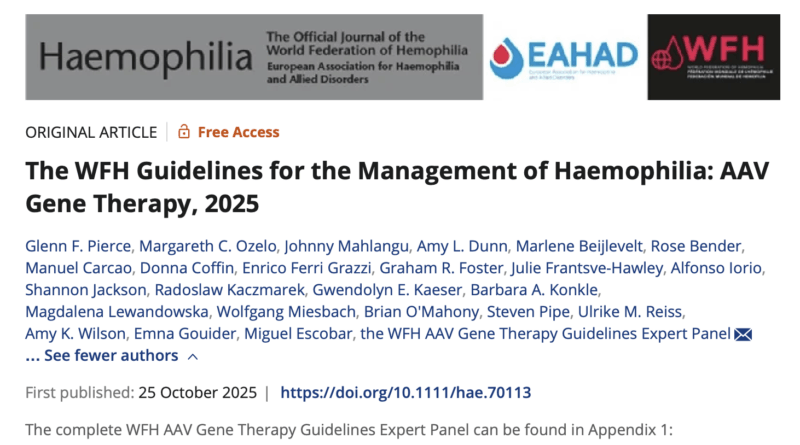
Wolfgang Miesbach on WFH Guidelines Covering FDA/EMA-Approved AAV Gene Therapy for Hemophilia
Wolfgang Miesbach, Professor of Medicine at Frankfurt University Hospital, shared on LinkedIn:
”WFH Guidelines for AAV Gene Therapy in Haemophilia – setting the global standard for safe and effective implementation in clinical practice.
35 pages containing 64 evidence-based recommendations developed by an international expert panel of 38 specialists from 17 countries – including haematologists, hepatologists, nurses, pharmacists, physical therapists, and people living with haemophilia.
How these guidelines were developed:
The panel used a Trustworthy Consensus-Based Statement (TCBS) methodology:
– Systematic review of 71 clinical studies from 2005-2024
– Modified Delphi consensus process across multiple rounds
– Strict conflict-of-interest management
What makes this unique: it’s the first iteration of WFH’s Living Guidelines Model (LGM) – meaning these guidelines will be updated regularly as new data emerges, rather than waiting years between editions.
Six core sections covered:
- Site Preparedness – Infrastructure for HTCs (hub-and-spoke model)
- Shared Decision-Making – Patient education and informed consent
- Eligibility and Screening – AAV antibodies, liver health, inhibitor testing
- Infusion Procedures – Safety protocols and administration
- Post-Infusion Monitoring – Weekly→quarterly→annual schedule (minimum 15 years follow-up required)
- Safety Management – ALT elevations, thrombosis risk, long-term surveillance
Key recommendations (highlights from 64 total):
- Eligibility: Only adults with severe hemophilia A/B currently approved
- Mandatory screening: AAV antibody testing, factor inhibitor status, comprehensive liver function assessment
- Intensive monitoring: Weekly lab work initially, then quarterly, then annual – but lifelong participation in WFH Gene Therapy Registry required
- Immunosuppression readiness
- Hub-and-spoke model: Not every HTC needs to administer gene therapy – dosing centers require specialized infrastructure, but follow-up centers can manage ongoing care
Research gaps identified:
– Long-term durability beyond 5-7 years
– Safety and efficacy in women, adolescents, adults >65
– Why some patients respond better than others
– Optimal immunosuppression strategies
– Real-world cost-effectiveness across different healthcare systems
– Hepatocellular carcinoma risk over decades
These guidelines also recognize significant challenges:
– Treatment costs may exceed $3 million per dose
– Limited access in low-resource settings
– Specialized infrastructure requirements
– 15+ years of follow-up creates logistical burden
– Global healthcare system variations
Congratulations to Glenn Pierce, co-authors and the World Federation of Hemophilia for developing the first comprehensive guidelines covering both FDA/EMA-approved AAV gene therapy.
This systematic approach and the innovative Living Guidelines Model ensures these recommendations will evolve with new data.”
Read the full article in Haemophilia.
Article: The WFH Guidelines for the Management of Haemophilia: AAV Gene Therapy, 2025
Authors: Glenn F. Pierce, Margareth C. Ozelo, Johnny Mahlangu, Amy L. Dunn, Marlene Beijlevelt, Rose Bender, Manuel Carcao, Donna Coffin, Enrico Ferri Grazzi, Graham R. Foster, Julie Frantsve-Hawley, Alfonso Iorio, Shannon Jackson, Radoslaw Kaczmarek, Gwendolyn E. Kaeser, Barbara A. Konkle, Magdalena Lewandowska, Wolfgang Miesbach, Brian O’Mahony, Steven Pipe, Ulrike M. Reiss, Amy K. Wilson, Emna Gouider, Miguel Escobar, the WFH AAV Gene Therapy Guidelines Expert Panel

Stay updated on all scientific advances in the field of hemophilia with Hemostasis Today.
-
Dec 19, 2025, 06:13Anna Aldehag Reflects on Her 12 Year Leadership in Sweden National Board of Health and Welfare
-
Dec 19, 2025, 05:54Abdul Mannan: APTT Mixing Studies Confuse a Lot of People
-
Dec 18, 2025, 23:14The “Normal” FVIII Level Trap in Females with Haemophilia
-
Dec 18, 2025, 23:11WFH Expands Multidisciplinary Bleeding Disorder Training in Vietnam
-
Dec 18, 2025, 17:13Daria Camilli on EuroBloodNet and EHC Collaboration for Bleeding Disorders
-
Dec 18, 2025, 16:50Marie Cambot on Innovhem’s Quantification of The HbF/HbS Ratio for SCD
-
Dec 18, 2025, 16:26Yogesh Rathod on Hematological Issues and ICU
-
Dec 18, 2025, 16:09Carlos Doti: I’m Reminded Why ASH is Such a Powerful Close to The Year
-
Dec 18, 2025, 15:23Michael Hadley: Well-Timed ACC Statement Just Out in JACC Journals
